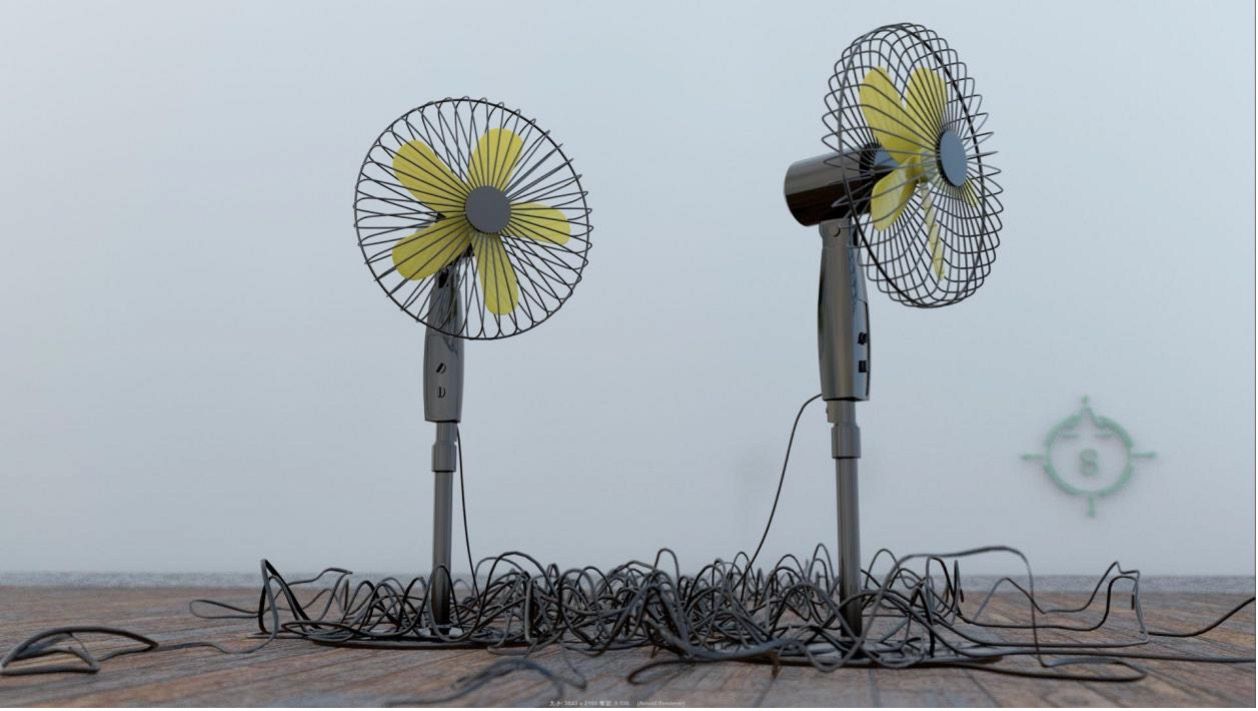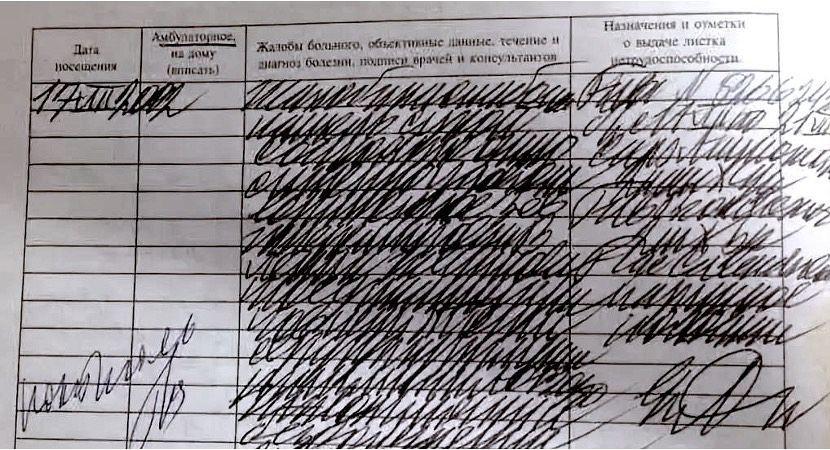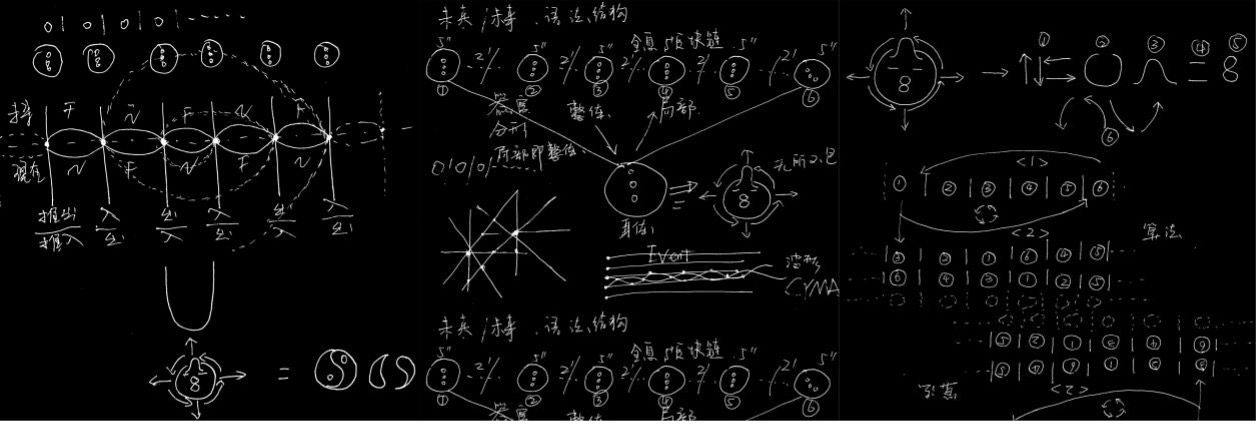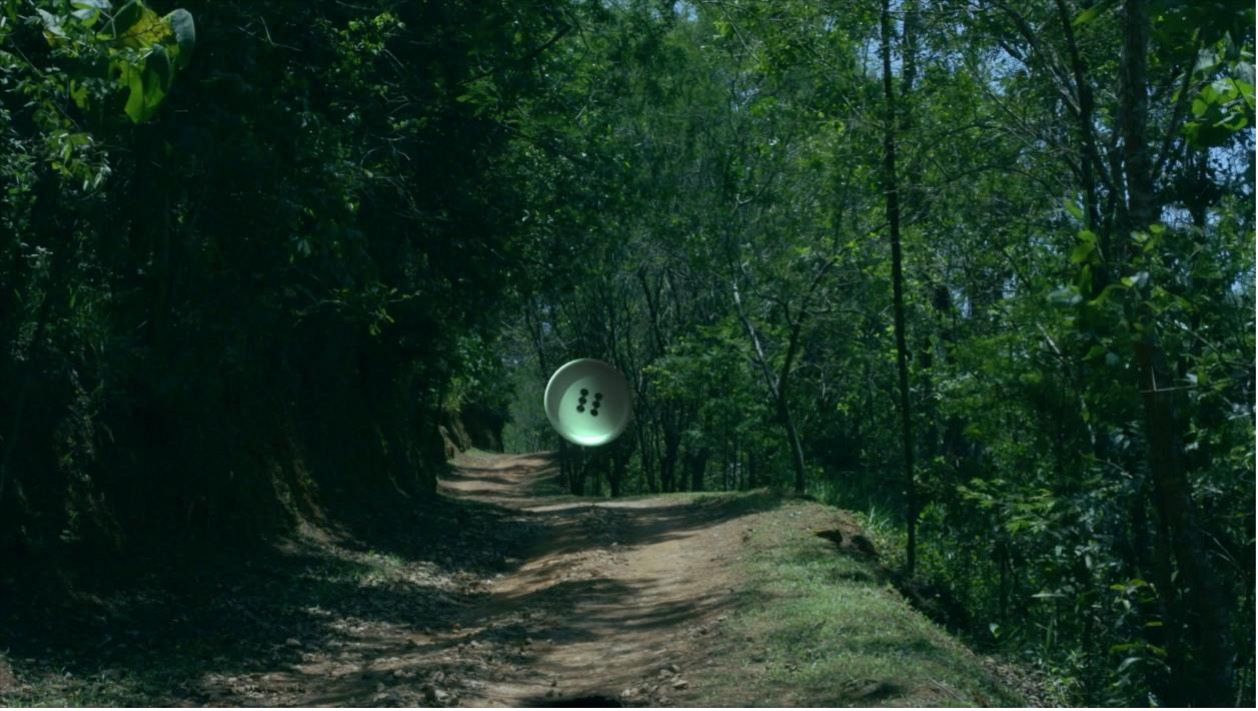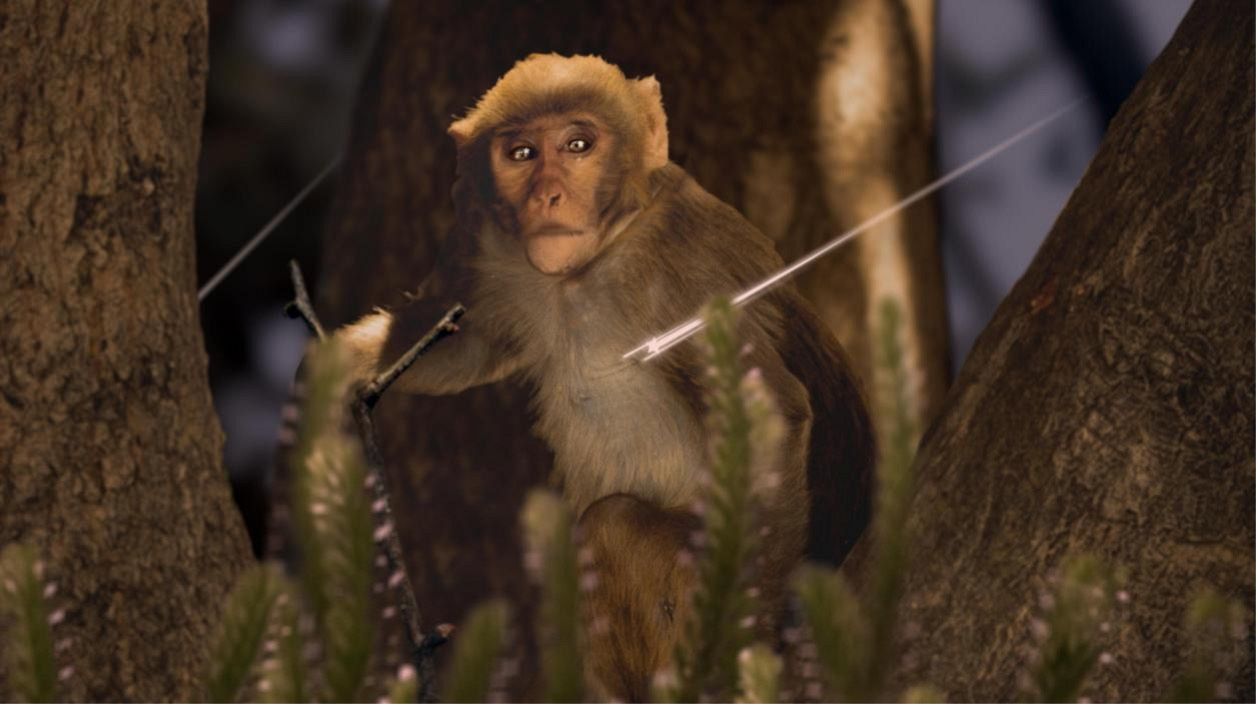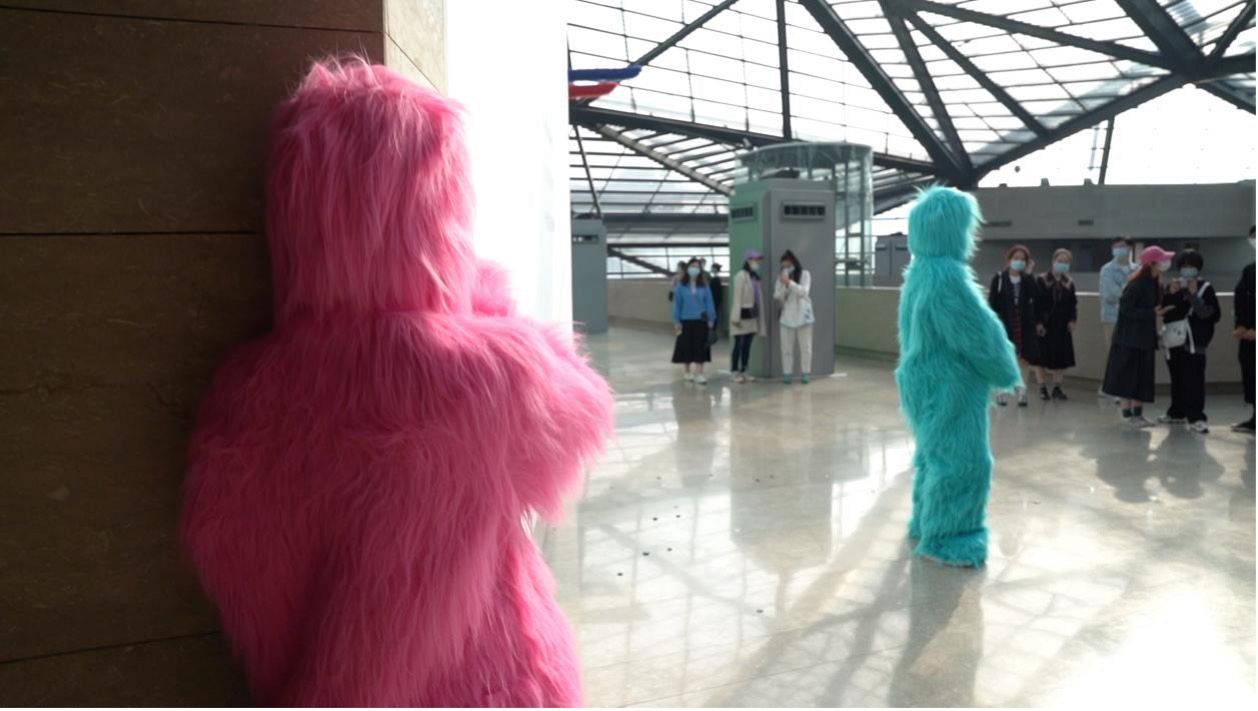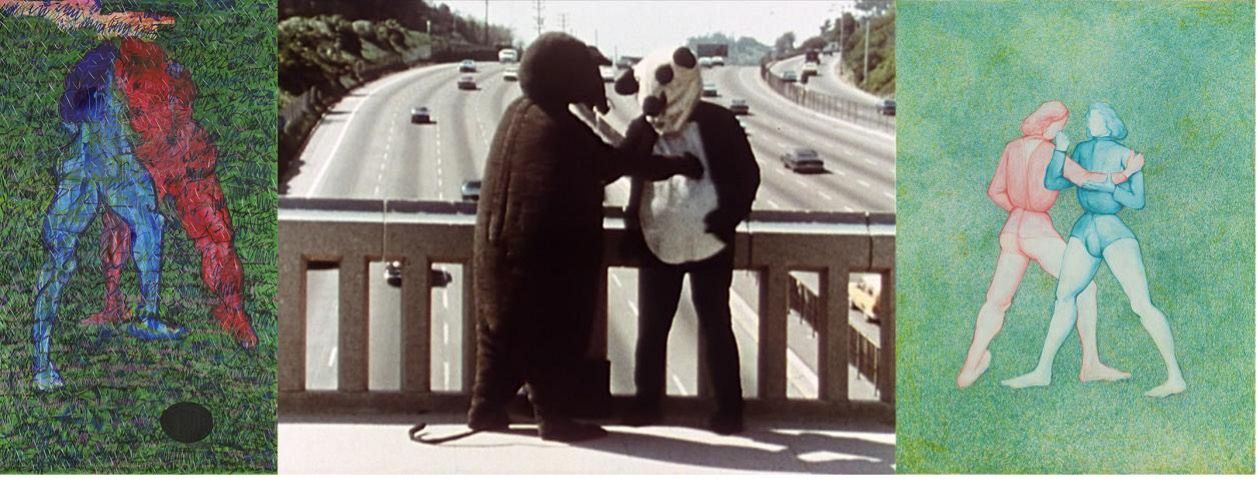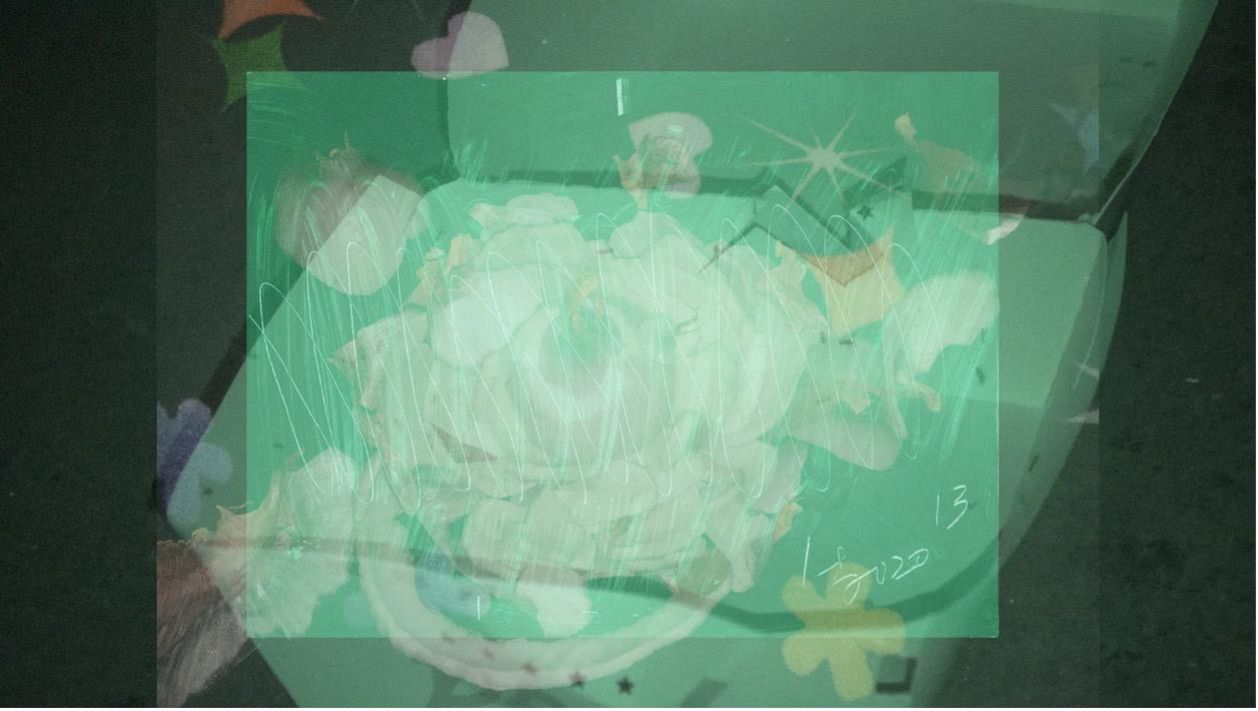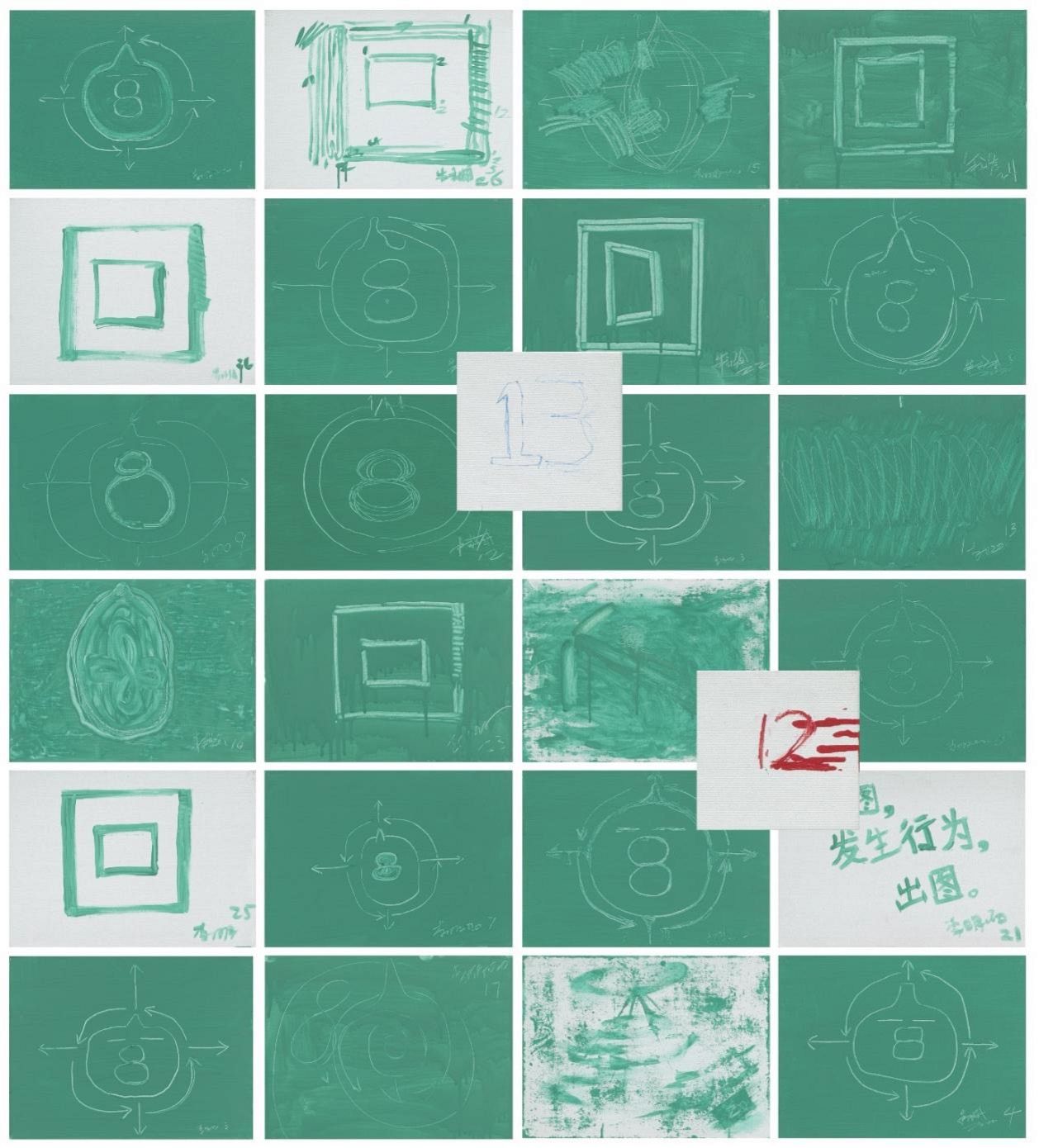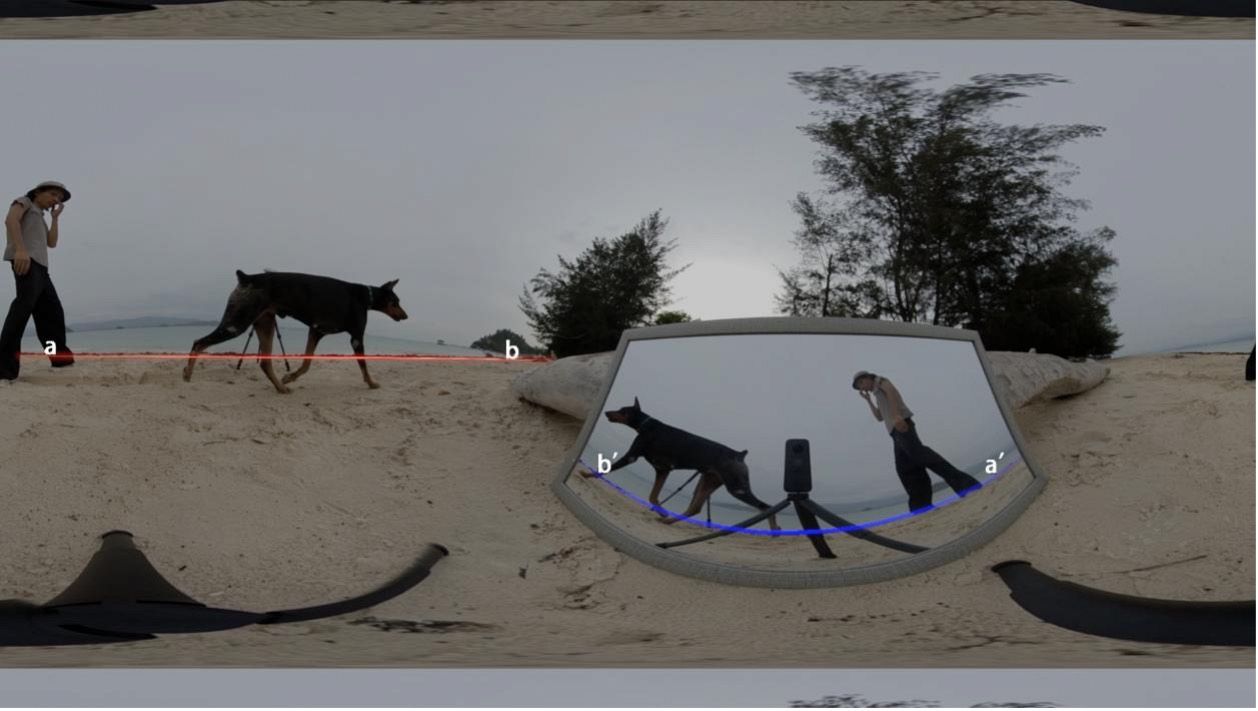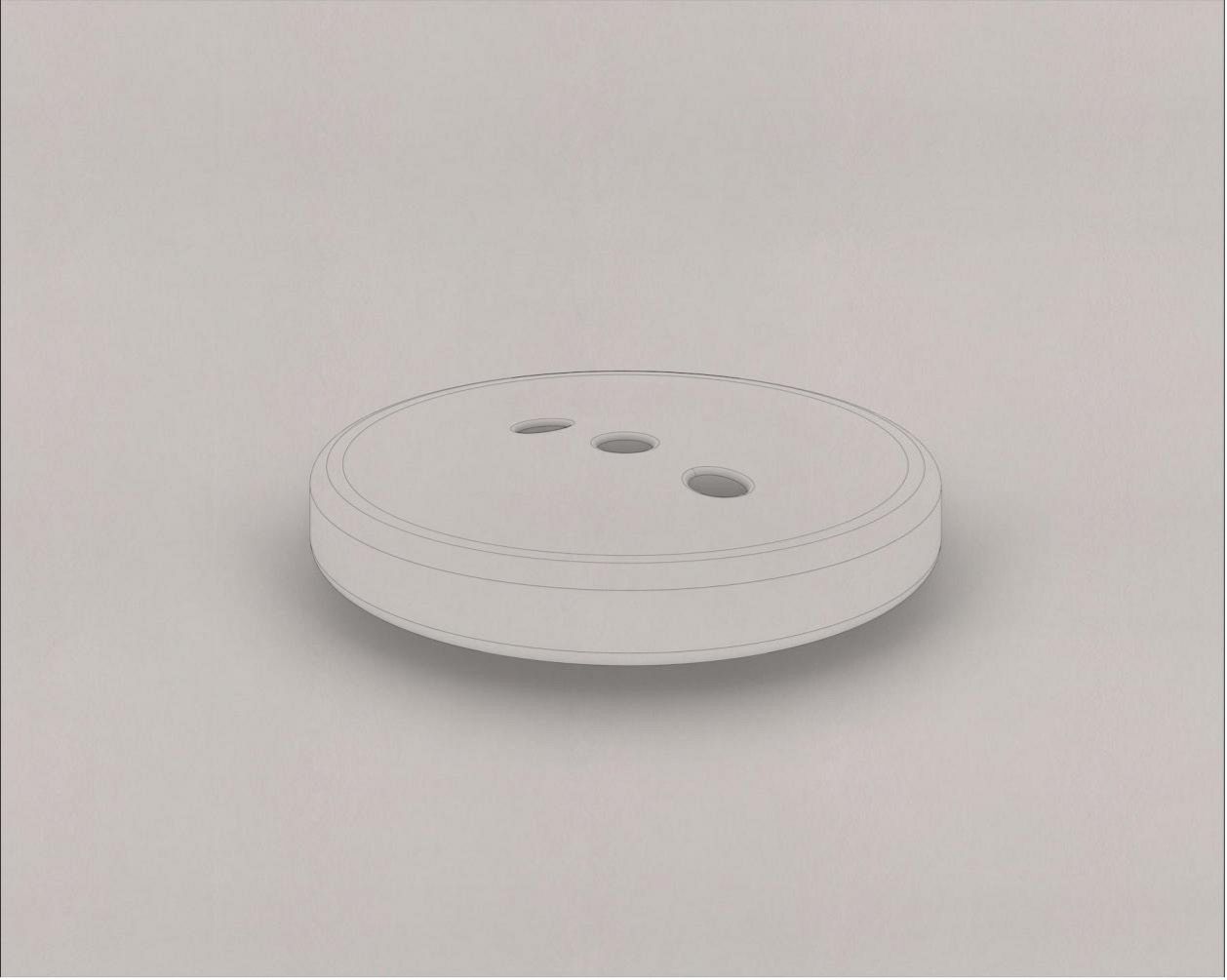Encryption is an embodiment of the laws of physics […] It isn’t obvious that the world must work this way. But somehow the universe smiles on encryption.1Julian Assange, Cypherpunks: Freedom and the Future of the Internet (London: OR Books, 2012), 5.
—Julian Assange, Cypherpunks: Freedom and the Future of the Internet
1. Laughter
An alchemist awakened from a dream and said, “I’m just missing one part and the universe will be complete.” However, they could not remember exactly what the universe looked like. Only one thing was certain, which was that they would be able to find a corresponding part in the real world: a button.
They also somehow knew that, in that dream, time had never stopped in the universe. There was no invisible hand of God; it was a playground of uncertainty, opportunity, and perversion. It would always resound with laughter (even if this laughter was concealed behind long hair). The laughter was intended to refute all explanations.
However, laughter and smiles can still be productive. In a famous Buddhist parable, Sakyamuni held up a flower and Mahakasyapa smiled. The one asking and the one answering engaged in an unspoken dialogue, and that smile built a bridge of knowledge between the two.
2. Wild Cursive
Is wild cursive a kind of flow? To a patient, the cursive scrawl of a doctor’s note may seem like words from on high. But the doctor’s wild cursive can usually be deciphered by a pharmacist, as though doctors and pharmacists communicated using a set of specific and secret signals unknown to outsiders. (People often complain that art professionals love to use jargon or speak in their own secret language, which might follow a similar logic.) Perhaps we should call them “encoded languages,” which are different from universal languages.
When information and meaning are encoded, people who do not have the key to the code see and hear just one thing: such as the scribbled medical note, the held flower, and the smile, the unintelligible artwork, or another expression of complex emotion. Encoded language can also take the form of a colony of bees dancing, a flock of birds in formation, and other natural spectacles. Though we are unable to see the transmission of pheromones, we can infer that conveying information between particular individuals is entirely based on a secret kind of knowledge within a group. Through a continuous process of communication between individuals, this knowledge is gradually processed and enriched. Interestingly, pheromones are chemical compounds that both insects and humans produce to stimulate others in a group or to attract a mate.
3. Wit
We always find amusement and happiness in comparison. Very few people know that before Michel Foucault laughed upon reading a Borges passage about a “certain Chinese encyclopedia,” 2Michel Foucault, The Order of Things (New York: Pantheon, 1970), xv. Freud had laughed when he read this confusing line of poetry by Heinrich Heine: “Until, at last, the buttons tore from the pants of my patience.”3Sigmund Freud, Wit and Its Relation to the Unconscious, trans. A.A. Brill (London: Moffat Yard, 1916), 341-2. In this instance, laughter revealed both his examined and repressed desires. Laughter is a direct product of wit: vulgarness alone inspires disgust, so obscenity can only be accepted when expressed in a humorous way. A small symbol (such as a pants button) can be reconstructed in the reader’s imagination as a discrete and direct obscenity, which satisfies the instinct.4The word “wit” has a complex background. In An Essay Concerning Human Understanding, John Locke wrote, “For wit lying most in the assemblage of ideas, and putting those together with quickness and variety, wherein can be found any resemblance or congruity, thereby to make up pleasant pictures and agreeable visions in the fancy.” John Locke, An Essay Concerning Human Understanding (London, Thomas Tegg, 1841), 89. In Samuel Johnson’s critique of the British Metaphysical poets’ use of wit, he wrote that wit is “a combination of dissimilar images or discovery of occult resemblances in things apparently unlike,” which could be considered a kind of ‘discordia concors.” Samuel Johnson, The Lives of the English Poets, Volume 1 (Philadelphia: Claxton, Remsen & Haffelfinger, 1868), 52. In 1905, Sigmund Freud proposed a similar idea in his Wit and Its Relation to the Unconscious. The original German term in the title is “Der Witz,” and for the purposes of this paper, we will embrace the English translation “wit,” as opposed to “joke,” because the term refers to the most refined and wise form of humor. Interestingly, Freud wrote Wit and Its Relation to the Unconscious and Three Essays on the Theory of Sexuality almost simultaneously.
In contrast to John Locke’s view, the essence of wit, as understood by Freud through Heine, is harmless levity; it is recovering the laughter of childhood. Wit has a similar subconscious structure to dreams. The button is the key to opening the flow between Heine and Freud. The key to this code is a controlling element, deciding whether the signals will be transmitted and managing the switch between restraint and release, invisibility and visibility, the part and the whole. Buttons can fasten clothing that covers the human body, but that clothing can be torn asunder, revealing the physical desires and ignorant souls hiding beneath.
Wit is also a tool of destruction and production. In the last few years of this post-truth era, we have seen how the powerful transform “wit” into a tool to acquire power and how laughter has become a neverending capitalist spectacle in the mass media.5For more on Trump’s comedic strategies, see Kira Hall, Donna M. Goldstein, and Matthew Bruce Ingram, “The Hands of Donald Trump: Entertainment, Gesture, Spectacle,” HAU: Journal of Ethnographic Theory 6 no. 2 (2016): 71-100. However, we cannot forget that wit can also be used as a method to oppose those in power, with the potential to become a tool for resistance. Prime examples of this are the satirical cartoons and political commentaries that have long been popular. Since the 18th century, in spite of violence, terror, and repression, cartoonists and writers have not been relieved of their pens.
Beneath the veneer of harmless talk, wit conceals sharp talons and fangs. On Freud’s foundation, Georges Bataille further pushed the art of laughter and the technique of wit into the realm of all human thought and action. Laughter and play have a deep connection; in play, people learn about the experience of human existence, rather than just an experimental idea of it. “We reach, wordless, through the unconscious, through laughter, what in any way cannot be subjugated, what, beneath its seeming powerlessness, is fully sovereign.”6Georges Bataille, “On the Ambiguity of Pleasure and Play,” Theory, Culture and Society 35 no. 4-5 (2018): 246.
4. The Form of Laughter
Two furry figures, one red and one blue wander around the fourth-floor exhibition space in the Zhejiang Art Museum. They look from a distance like two large headless and tailless amoebas. When the furry figures kneel on the floor, they reach to fish out their buttons, but not without some difficulty. It scatters these small items randomly on the floor, like in traditional Chinese divination. Next, it crawls on the ground, inspecting the buttons and arranging them into a pattern. The furry figure sits cross-legged, peering through the fur and the buttonholes, offering buttons to museumgoers. It walks slowly, then stands frozen in a corner of the exhibition space. When the furry creature appears again in the first-floor lobby, it seems to have completed a leap from the diving board installed on a wall on the fourth floor, but this leap was not visible. It reclines on a trampoline in the middle of the lobby, breathing heavily as though it just finished exercising, its' chest rising and falling.
The pair are mute; they do not talk to themselves or one another. The artists infused all of their intentions into the few pictures, riddles (facsimiles of wit), and strange behavior at the exhibition, which they had refined in advance. The mannerisms of the furry creatures are those of the repetitive, symbolic, and zany actors of the silent film era.
According to Freud, imitation is the best motivation for art and play among children. When they grow up, they lose this innocent privilege, thus becoming comical instead. Employing techniques that Freud highlights in Wit and Its Relation to the Unconscious—substitution, brevity, word games, motion, absurdity, erroneous inference, comparison, and inadequacy—children achieve an economy of rational taboos and conceptual forms, and they make effective use of psychic and emotional energy. The release of repressed emotional energy brings about comedic pleasure.
However, one-off comedy may only open one corner of the subconscious domain; it takes repeated comedy to break into the space of political awareness. Of course, Zhu and Li are not the first group of artists to dress up in costumes. I thought of The Point of Least Resistance, the first collaborative video work by Peter Fischli and David Weiss from 40 years ago, in which the pair make a joke of the contemporary art system or create a kind of allegory. These two Swiss artists play the roles of a rat and a bear (actually, a panda) who want to strike it rich in the California art world. The work begins with a scene reminiscent of a second-rate noir novel. It tells the story of two working-class characters who want to become part of the middle class and the cultural world through contemporary art, but they end up involved in a murder mystery. On paper, it sounds like a Sesame Street version of a Fassbinder film. For the rat, there is no difference between investigating a criminal case and making art because quests for truth and beauty are one and the same. Misfortune befalls him when he investigates the murder of a famous artist. As he approaches the truth of murder and art, he becomes the target of a murderer himself. The most beautiful part of this story may be that, after all of these trials and tribulations, these two animals reestablish their friendship. The drunk and despairing pair drive out of the city to be embraced by nature. As the sun sets on the horizon, darkness swallows the city in the distance; what brightens the outlook of the rat and panda is that they can somehow see the sun rising on the other side of the earth.
This classic piece by Fischli and Weiss can help us understand some of what recently happened in a gallery in Hangzhou (or it could do precisely the opposite, and completely ruin the effect). The subject in The Point of Least Resistance is not entirely clear, but that lack of clarity forces open a crevice of contemplation of unconscious thieves, behind-the-scenes dreamworlds, and child’s play. Their methods of resistance are not direct but questionable; they flee from events, hide in alcohol, turn to mathematics or metaphysics, return to dreams, and fly in the sky above the city.
Placing these two artist duos into dialogue across time and space may be a bit offensive. If there are any coincidences in their narrative elements, it may be the inevitable result of the similarity in their worldviews. Laughter and jokes cannot be completely calculated, and wit should not be the product of irrational, subjective ideas, or an embodiment of universal values. Otherwise, wit invariably becomes the province of political advisors and subject to the infinite distortions of mass media. Laughter can be light as a feather, but its essence is often heavy as chains.
5. Two and Infinite
Yet in Wild Cursive, Zhu Changquan and Li Ming appear as simulations in different mediums. In addition to the red and blue furry figures playing with buttons and teasing exhibition visitors, there are also paintings that feature red and blue men who fight to the south and embrace to the north, as well as videos that depict two oscillating fans blowing at two different speeds. All of these works contain a duality, albeit a fluid conception in which the two sides are sometimes different and sometimes alike.
Elements of other sets of dualities have been etched into the works: temporal and spatial systems, chaos and order, the part and the whole. These dialectical concepts can be infinitely extended in spiral designs and abstract symbols—both appear in The Point of Least Resistance and in the Wild Cursive exhibition space. They have no relation with the duality game in a closed system, rather a fluid space created by the true play.
When one and two are seen as isomorphic, the subjective and objective are understood as a single entity. When the one and the many or the infinite are seen as isomorphic, visible things become part of our essence—this is the world constructed in I’m Disguising Myself in Front of You and Inspiration, Chapter Four: A Crevice Between Two Fingers. Two can and must become the many or even the infinite.
But at the same time, the infinite diffractions and games related to these things cause some confusion and unease. Li Ming once told me a joke: full of hope, someone who has never eaten an onion peels away layer after layer, but he never finds the flesh. For creators, if a work of art cannot eliminate confusion, it may instead nourish confusion, in facing countless questions and encoded towers, with the many and the infinite, how can we avoid falling into the void and maintain a clear awareness of the issues and an explicit way of articulating them? These are the questions that adventurers must answer.
In investigating the number two, we can begin with what the artists call “contextual” affinity: in the Infinite Enumeration series of paintings, Zhu and Li concocted a working method that involves 27 rounds of copying and imitating from memory a given abstract image. This exhibition also includes hand-drawn reproductions and a climbing pillar in the center of the space, as well as long transparent pipes hanging in the same location in another gallery. Round or spherical objects appear repeatedly in the mixed forms of video, digital image, and installation… They are mirror images of one another, but they also reveal their differences. This phrase encompasses the reflections of these double individuals and the individual’s unique reflections of the world.
In addition, whether they are acting in a video matrix or a literary labyrinth, adventurers have to confront a historical predicament. Battles are waged between rationality and imagination, logical concepts and emotional images; and on these battlefields, articulable content and perceptible phenomena have always existed in an irreconcilable deadlock. In order to construct an expressible formula and find an absolute that can transcend chance, these two artist duos—Zhu/Li and Fischli/Weiss—have coincidentally gravitated towards numbers and formulas. However, artists and theorists are different, and thus provide different solutions.
In the end, whether in the paintings created over 27 rounds, or the “twin” works, or the winding spatial structures, they all depart from the intellectual battlefield and return directly to a site of pure phenomenon and pure perception, posing an unthinkable totality of things and an “intact” surface that is presented in a sensory way. Numbers, symbols, and formulas, along with disguises, dreamworlds, perversions, and the state of hovering or flying, appear in the works of Fischli and Weiss, as well as those of Zhu and Li. Today, we must update Nietzsche’s image of the fool’s cap so that we can “soar and play above” morality.7In Chapter 107 of The Gay Science, entitled “Our Ultimate Gratitude to Art,” Friedrich Nietzsche wrote, “We all need arrogant, soaring, dancing, mocking, childish, and blessed Art, in order to not lose dominion over things which our ideal demands of us.” Friedrich Nietzsche, The Gay Science, trans. Thomas Common (Mineola: Dover, 2006), 79. We must embrace our senses, bidding this closed world of games goodbye.
6. The Unnamed Graphic
Perhaps artists have more doubts and uncertainties than philosophers. Perhaps their manner of expression isn’t so clear-cut and decisive, and their deductive reasoning is full of holes. Thanks to a “leap of faith” (a universal idea among the “assassins” in the gaming world), things in a world constructed by artists (like the buttons floating in the Teacher, Teacher video) can escape gravity and exist in our vision and experience in a secret or encoded way.
That unnamed graphic Zhu and Li created seem to represent this hidden knowledge. Because they actively free themselves from the bond or collusion between text and image, at a moment when the graphic has not yet evolved into a general symbol or become represented by specific terminology, it constitutes something absolute that hides beneath the skin of the diverse universal. In a situation that cannot be known or understood, this is a path that must exist to intervene in absolutes. The interventionist can be a hundred-eyed monkey, an unnamed graphic, a small sphere called Aleph, a rare Zahir aggregate, any sphere, any circle, or a button.
“We will start a bang, right up front, vertical launch”8lines from Inspiration, Chapter Four: A Crevice Between Two Fingers (2020) Things are just as simple as Peter Fischli and David Weiss say in their film. You need to give a child a button first, and what they can bring is more than a world, but many universes.
Translated from the Chinese by Bridget Noetzel.
Bridget Noetzel is a translator, editor, and art consultant based in Hong Kong. She received a BA in both Chinese Language and the History of Art from Yale University. Since 2009, she has worked with galleries and artists in Beijing and Hong Kong, and she has translated and edited for major publications, institutions, and auction houses. In 2017, she co-founded the Asia Photography Project. She was the translator for Yi Ying’s history of modern Chinese art, entitled Art and Artists in China 1949-Present (Cambridge University Press, 2018).
Chen Min is a multi-player. After living and pursuing studies in France for 10 years, she returned to China and now lives in Hangzhou. She is currently pursuing a doctoral degree at the China Academy of Art. Chen Min‘s current research interests lie in the issue of History & Iconology, Games & Arts, Surrealism & European Avant-Garde Movements. Chen Min is one of the winners of Hyundai Blue Prize 2019.
